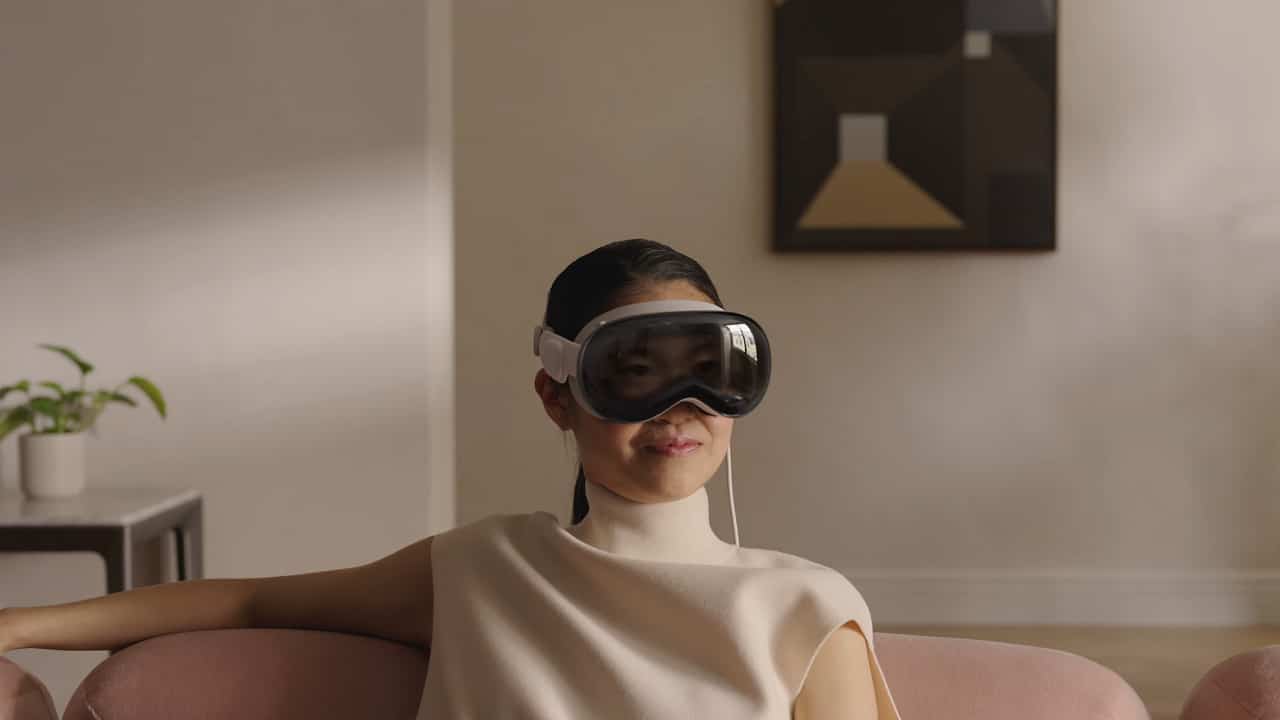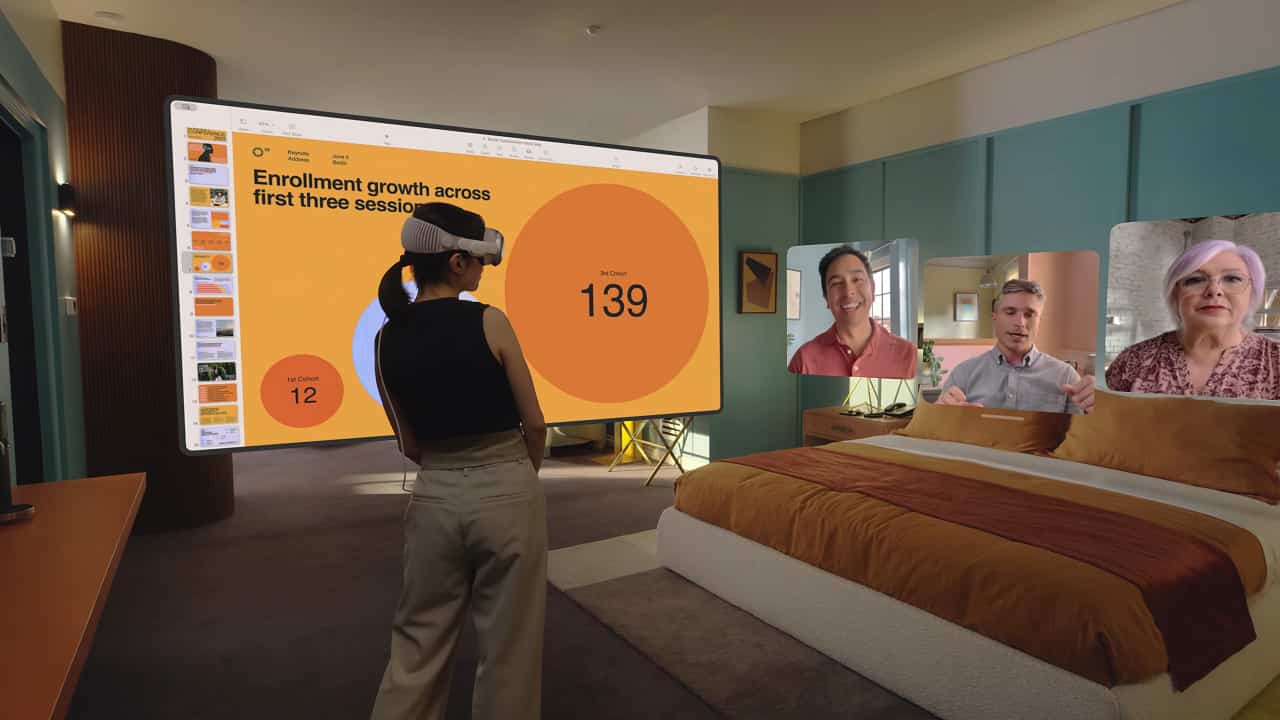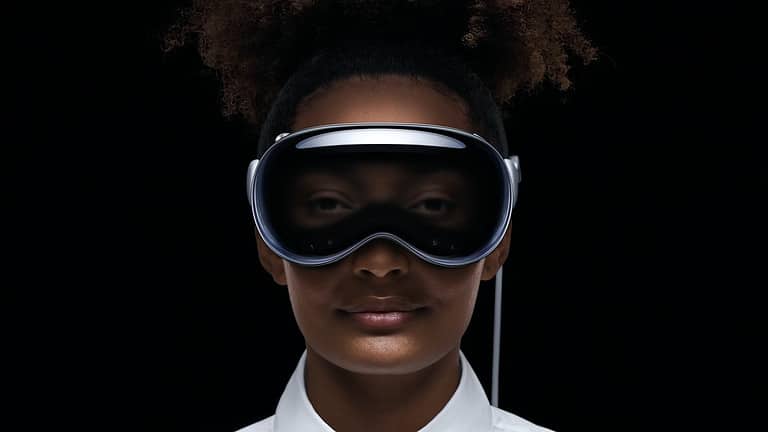The Apple Vision Pro is Apple’s first major product launch in 2024. The headset hovers somewhere between forming the pathway to a virtual reality (VR) world and digitizing the real world with augmented reality (AR). What exactly can you buy for US$3,500?
Individuals who have already tested the Apple Vision Pro find that the device does belong in the VR headset category. There is no “window” between the user and the real world, but a full computer between the user and his surroundings. While it is an option to look into the real world through this computer, it is equally possible to choose to play in a completely different environment, such as the moon.
Room for improvement
Clearly, Apple has not yet been able to eliminate all the inconveniences in the first generation of its headset. The Wall Street Journal described the overall experience as the following: “The Apple Vision Pro has all the features of a first-generation device.” For example, testers observe that the device has a considerable weight. A weighing by The Verge tells us that the device is heavier than the latest generation of the Meta Quest and its Pro variant. In that competing headset from Meta, the battery is built in. That’s not the case for Apple, while Apple specifically chose to keep the battery out of the Vision Pro to keep the device’s weight “light”.
The headset’s battery life is limited to two and a half hours. That’s fine for someone who wants to use the device for leisure. However, since the device should complement the real world and a day consists of many more hours than two and a half hours, we think the battery capacity is too limited.
Furthermore, there may be problems with the cushion that was magnetically attached to the inside of the computer part. This snaps on well enough while using the device, but the cushion comes off fairly quickly when the headset is picked up by grabbing the cushion. Of course, it’s a shame to see a $3,500 headset fall to the ground so quickly.

Clean image, but with an edge
Testers are very pleased with the sharpness of the micro-OLED lenses at about 4K per eye. There is praise for the purity of the image of objects in the centre of the screen. But that sharpness would soon be lost on the sides of the display. On that side, according to tests, a user quickly collides with the image, as there is clearly a black border around it where the Apple Vision Pro’s screen stops. You could compare it to wearing glasses, where the edges of your glasses obstruct the viewing angle around you.
At The Verge, they note that Apple also hasn’t been able to come up with a solution to display problems that other headsets also experience. “You can really feel that the company’s ambitions are ahead of the product itself,” notes the reviewer.
Good picture and sound
Where the computer in the Apple Vision Pro did excel was in processing data and images quickly. According to Apple, there are only 12 milliseconds of latency; during this time, the camera has to process the image and data processing happens. That is important for following online meetings or surfing the internet. That work should not be disturbed by slow load times. It would be very annoying to be in a meeting and already hear the sound of speaker 2 while on your screen speaker 1 is still speaking. Teams and Zoom, by the way, are already downloadable for the headset.
Also read: Zoom and Microsoft plan to shake up hybrid meetings, Cisco doesn’t

That audio, by the way, has a good quality and, according to testers, would actually come from the area where the meeting is sitting in the headset’s display, for example. “The headset supports spatial audio, so if you turn your head away from the movie in front of you, the sound stays in the same place, just as if you were watching a real TV,” writes CNBC. Only testers recommend using headphones or earbuds. This is because the sound coming out of the device would be very loud and easily heard by those physically nearby.
Limited usefulness in business use
Then, the reviewers noted that it would take longer than usual to get tasks done with the Apple Vision Pro. The device registers the user’s hand gestures while working with the headset. Thus, the headset perceives what action the user wants to perform, but to know where to perform that action, the headset registers eye movements. “I’ve never been so happy to see a real keyboard,” was The Wall Street Journal’s reaction, for example, after typing a message with the digital keyboard in the headset.
So, the user has to look at where to perform the action to make everything go correctly. This makes actions go slower than in real life. For example, few people look at their keyboard while typing constantly. Something the Apple Vision Pro does require. By the way, these issues have occurred with all headsets on the market so far. The reviewers do note that Apple’s headset reduces these problems, but thus does not completely eliminate them.
Productivity lowers
In general, the Apple Vision Pro suffers from the problem that it hasn’t quite figured out exactly what target audience it wants to serve. For example, Meta’s VR headset is positioned more as a device to use during leisure time or specifically during meetings for business use.
The Apple Vision Pro, on the other hand, is presented as a headset that can be used at any time of the day and thus for work. In reality, that will come at the expense of the speed at which an employee completes tasks. So, a good reason to spend US$3,500 on the Apple Vision Pro for business use is simply not there.
The real world, but worse
That could change in future generations of the headset. Once the first-generation flaws like the heavy weight and blurry image on the sides of the screen are eliminated, it is already better to use the headset. To contribute to productivity as well, there are still more steps to take. Those who do want to use such a device to liven up following an online meeting might as well buy a cheaper alternative.
That also applies to leisure use, by the way, because games that score well for VR are not available on the Apple Vision Pro. In addition, you will quickly notice that the device is too heavy to walk around with. Moreover, there are no limits to set on the “playground” or the physical space in the room in which you can safely walk around. A VR headset does have this feature and will shut down the game once a user goes out of the safe space to avoid physical accidents.
Tip: The technical details of the Apple Vision Pro can be found in this article: Apple Vision Pro: will it shake up the way we work?
